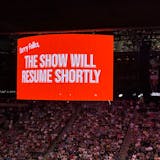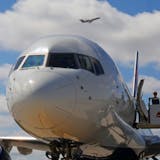After 15 years of the federal government overregulating education, the new federal education law in part returns educational policymaking to its rightful place: legislatures and local boards. Innovation can now be renewed. Minnesota indeed does have some excellent school "organizational innovations" such as open enrollment, postsecondary enrollment, chartering, site-governed (teacher-powered) schools, alternative schools, pre-K, etc. But organizational innovation is not enough.
The Legislature should now give permission to research new 21st-century "instructional models" not permitted by current law.
The state just reported that although the average graduation rates inched higher (larger gains at some urban schools), many schools did not meet improvement targets. Educators have been working to get better for decades, and learning is improving. But might a significant barrier to more rapid improvement actually be the design of our inert system of schools? The way we teach, define achievement, measure learning? We think so.
Minnesota spends billions on making small improvements to today's schooling models but very little on researching redesign for tomorrow's schools. We know what would happen if Apple, 3M or Medtronic had very little research and development. But what if the Legislature gave permission to a small number of schools to create "Innovation Zones" focused on developing new instructional designs to customize student learning experiences in ways that would motivate each to excel? Imagine the change in thinking — from a class of 28 to a student of one.
What would be needed to make such zones work? First, they would need flexibility from the rules to foster the creativity of teachers and principals. Personalized learning would be shaped around a student's aspirations and aptitudes and would bridge the chasm between the classroom and the world in which they will live and work. This would mean transforming not only instruction but also the current one-size-fits-all learning standards. It's a given that all students need to master the safety net of basic skills. But when we personalize learning, not all students will need to meet high standards in the same areas. Personalization will motivate students to learn in ways we have not seen. And when students are motivated, just try to stop them!
Flexibility also includes measuring learning in new ways. Testing would be focused on gathering information from multiple sources that is useful to teachers and students. Innovation Zones would be exempt from the state tests that provide little useful information to teachers, take too much instruction time and have little predictive validity to later success. A byproduct of a new measurement design could actually be better local and state accountability than we have now — and at a big cost savings to boot.
Flexibility also means better use of learning time. The system is currently designed so that all students receive about 170 days between September and June. Instead, the zones would allow teachers to use time and space designed around each student. Other flexibility would permit a redesign of supervision and a reduction in the number of time-consuming state reports.
The schools in the zones also would need autonomy. Not every detail of new models is known ahead of time. Autonomy requires trust to redo plans quickly without needing state permission each time. Autonomy means empowering professional teachers to have far greater control over their work.



